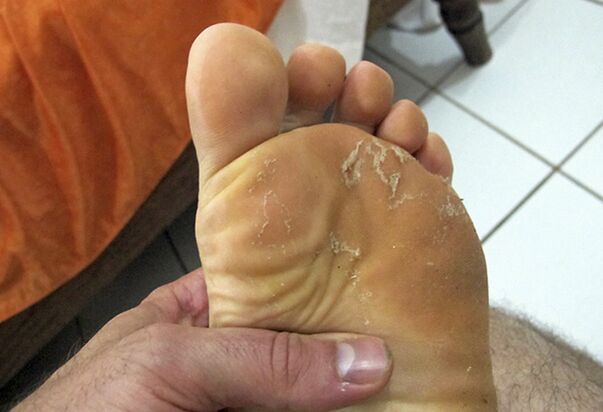
Fungi features are a common disease that belongs to the dermatomycosis group and develops due to the activation of pathogenic microorganisms.
The causative agents of mycosis live in plants and soil, in the body, in the body of animals and maintain their lives, being in the shoes or clothing of the infected, so absolutely everyone can become infected with a fungus infection.
What is my toe mycosis?
The foot fungus is the disease caused by microscopic pathogenic fungi, which is a lesion of the skin of the interdigital gaps with the further spread of infection in the healthy areas of the body.
This pathology can manifest at any ageBut especially often the disease is diagnosed in older people and people with weakened immunity.
About 50 species of fungi that exist in nature are potential risk.Under the influence of favorable conditions, they are all capable of parasite in the human body and within it, provoking the development of systemic and local fungal pathologies.
Important!
The lesion of the fungus of the foot causes a change in the skin structure and, in the absence of timely treatment, the breakdown of the nail plate.
MKB Code 10
According to ICD-10, Mikoz Stop has code B35.3.
Varieties of fungal diseases on the skin
Experts distinguish several main types of mycosis depending on the pathogen.Each variety has its own characteristicsAnd continues with a number of unpleasant symptoms.
Rubofite
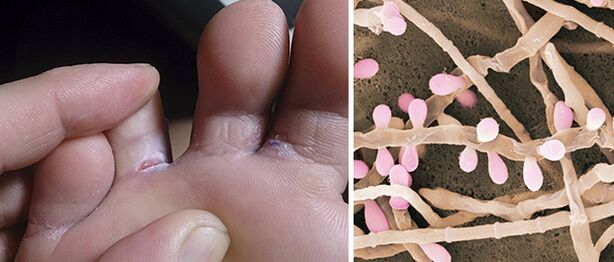
The causative agent isTrichophyte rubrum fungus.The clinical photography of the pathology begins with the fact that the disease covers the legs and folds between the fingers, however, in the process there is an infection through the body by lymphematogenic spread of foreign protein structures.
Candidiasis of stop
Develops due to penetration into the human bodyCandida genus mushrooms.The candidiasis of the stop begins with the lesion of interdigital spaces and nails.At the same time, the nail roll area becomes hyperemic and edematous, and the patient may be disturbed by pulsating pain in the damage area and severe itching.
Onychomycosis
Damage to nail plates caused by dermatophytes, fungikind of candidate or mold.Fungi are not important for conditions of existence and are characterized by high life resistance, so with an advanced form the disease is difficult to treat.
Intrigue form (interdigital)
The most typical form of mycosis, which is determined by damage to interdigital folds without the appearance of signs of the pathological process in the leg.As the patient develops, cracks, peel, erythema and make -up appear.In the future, against the background of the disease, any bacterial infection can develop.
Squamine —the hyperkeratotic form
It is characterized by simultaneous damage to both feet.The disease continues with severe peel and keratinization of infected areas of the skin, as well as the appearance of deep cracks in the affected areas.Itching is irrelevant or missing.
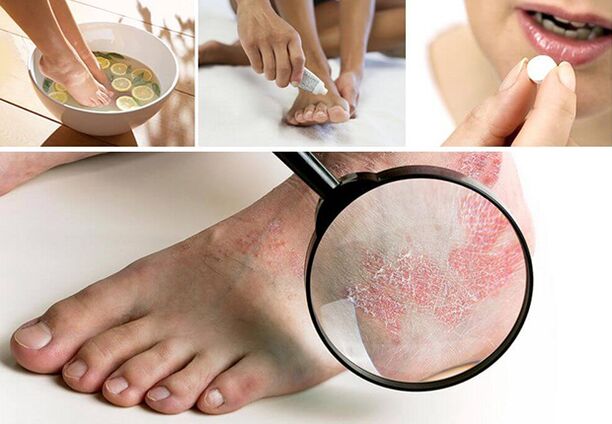
Duplicate forms
After infection penetrates the body, many bubbles with a rough surface appear on the patient's skin, hyperemia and increased swelling, which makes the disease a double form of eczema.After rupture, bubbles form areas of erosionOn the heel or lifting of the leg.
Deleted shape
A variety of mycosis has minimal clinical manifestations in the form of ambiguous microcrats in interdigital folding of the skin and cork peel.The patient does not suffer discomfort, which is why the treatment of pathology is postponed for a long time.
Stingy
For a long time, deep mycosis, which mostly affects the feet.The disease begins with focal inflammation in the subcutaneous tissue and gradually spreads to the soft tissue, internal organs and bones.
In the initial phase the pathology does not manifest, but then a seal with purulent content and a specific odor is formed on the foot of the infected.The surface of the skin becomes transfigured and resembles the turtle shell.
The stages of stop mycosis
The incubation period of stop mycosis is 3-14 days, after which the infected person manifests the first signs of infection.Dermatologists draw patients' attention to the fact that the disease has several stages of development.
initial
The patient may not doubt the infection, as the beginnerThe mycosis stage is perceived as the common dry skin.Acques and redness appear on the legs.There is slight swelling and itching.
Average
In the middle phase, the fungi are identified without difficulty, as large pink spots appear on the skin, the peel area increases and the itching increases.
Neglected
The fungus affects both legs with interdigital places and nail plate.Nails become fragile and fragile, begin to crumble and sprinkle.The skin is thick, compressed, covered with deep cracks and separated by large layers.
Causes and symptoms of fungal damage
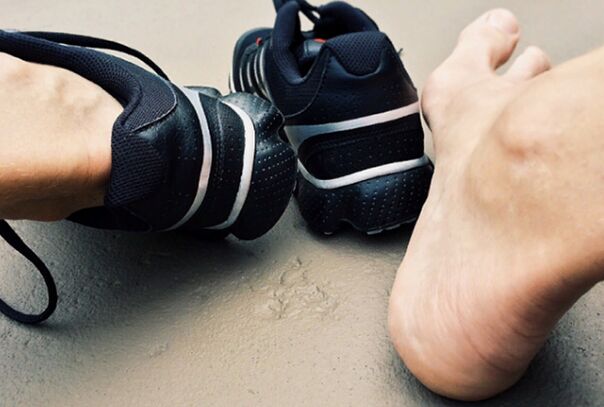
If a person is completely healthy, after direct contact with the source or carrier of the infection, his or her personal things or household objects, the infection may not happen.However, when any disorder is present in the body, there is a severe risk of infection.
They become provocative factors:
- weakening of protective functions;
- Increased sweating or dry skin;
- extended medicines;
- non -disagreement with hygiene rules;
- violation of blood circulation;
- the presence of microdamins on the skin;
- Excess weight;
- foot deformity;
- Wearing tight shoes.
Depending on the localization of inflammation and the form of the disease, fungal infection may be associated with the following symptoms:
- light or severe skin rash in lesions;
- itching and burning;
- peeling skin;
- Change of nail color;
- the appearance of small cracks;
- loading and thickening of the skin of the feet;
- bubble rash;
- Unpleasant odor.
Troubleshooting
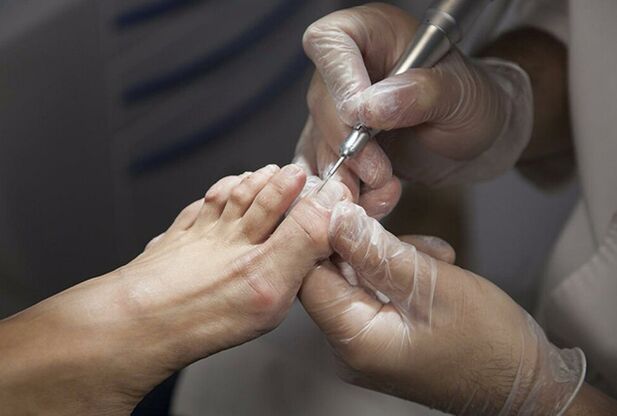
The diagnosis of fungal foot diseases is performed by a mycologist and a dermatologist, who should be contacted immediately after the appearance of one or more symptoms of pathology.
The specialist will be able to identify the presence of infection during initial inspection, but it will not be possible to determine the type of pathogen without additional laboratory tests.
Determination of the type of fungus is performed using:
- Overall and biochemical blood test;
- scrap from the affected area of the skin;
- planting the material collected for the nutrient medium;
- skin biopsy;
- A special test to confirm the presence of infection in the body.
Based on the results obtainedThe doctor diagnoses and prescribes treatmentTarget to eliminate fungi infection and symptomatic manifestations of mycosis.
General principles for the treatment of the disease in the legs and fingers (little finger)
Treatment of mycosis is performed using effective medicines, which can be prescribed exclusively by the attending physician.Most often the patient is prescribed:
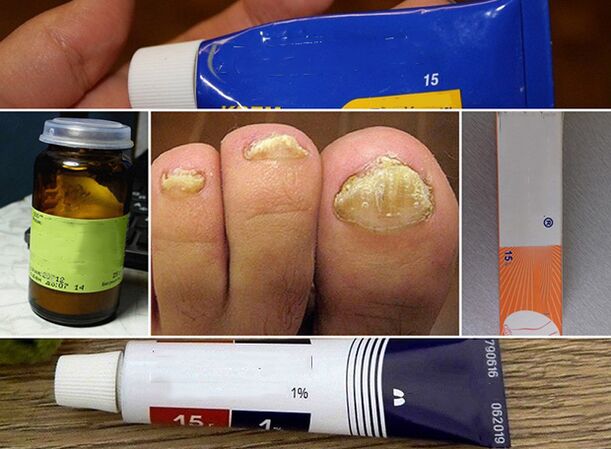
- Antifungal agents for internal and external use;
- antimicotics;
- corticosteroids;
- antihistamines;
- Polyvitamine complexes.
Important!
In the initial stage of the disease, treatment can be performed using alternative medicine recipes.Many help to get rid of the problem quickly, but in some cases they are able to cause an allergic reaction.
How is it dangerous for mycosis in single?
If, after diagnosing mycosis, the patient refuses to treat or ignore the symptoms of the disease, his condition will worsen over time, and the symptoms will become more pronounced.Moreover,Lack of treatment threatens the appearance of complications.Among them:
- spread of infection in large areas of the skin;
- the development of body hypersensitivity;
- annexation of secondary infection;
- Complications of related diseases.
Important!
Continuous physical and aesthetic discomfort can lead to psychological problems.
Can mycosis of the foot go to other parts of the body?
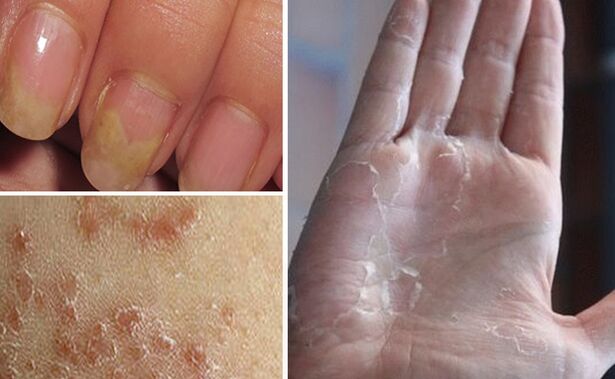
Fungal diseases do not pose a particular risk to human life, but unless personal hygiene rules are observed, the infection can spread to other parts of the body, provoking the appearance of major damage focuses.
The patient may also notice the characteristic symptomatic manifestations of the patient in the later stages of the development of the pathological process when they are made on the skinrounded rashes of a pink shade are visibleOr bladder with transparent content.
Prevention of the disease
To prevent infection with mycosis, it is not enough to rule out any contact with possible sources of fungal infection.Moreover, information is at a minimum communication with the carriers of the disease and their personal things, preventive measures should also be directed to:
- compliance with personal hygiene;
- treatment of chronic diseases;
- Keeping a healthy lifestyle;
- Strengthening immunity.
The foot fungus create a risk not only for an infected person but also to his narrow environment, so after discovering the first signs of mycosis, you shouldTake all possible measures to be easedfrom the disease.
To avoid complications, it is important to contact a dermatologist in a timely manner for diagnostic measures and description of accurate treatment using medication.

























